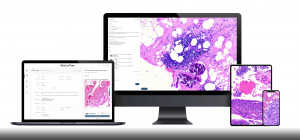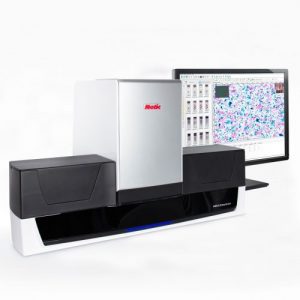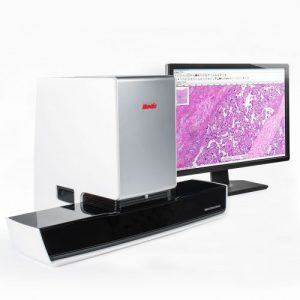Pathology in India has long been rife with malpractice and illegal labs. New regulations and government enforcement of old reforms, however, are changing the outlook for patients and creating the opportunity for widespread implementation of digital transformation.
Background on Pathology in India
In terms of the global pathology provider shortage, India initially appears to have a more robust pathology supply than many other nations do. On the surface, tens of thousands of labs serve the country’s population. However, as many news outlets have reported, the majority of these private labs are technician-run, without a certified pathologist onsite to provide, oversee, or sign off on diagnoses. In some particularly egregious cases, illegal pathology labs have falsified the results of thousands of lab reports, putting patients at extreme risk.
Advocacy groups and professional pathologist organizations have long lobbied for more stringent enforcement of a 2010 ruling from the Gujarat High Court that forbids technicians from running their own independent labs without oversight from a practicing pathologist. India’s Supreme Court upheld the ruling in 2017 and began crackdowns on some unaccredited operations.
While critics argue that these measures are not being carried out quickly or severely enough to deter illegal lab activity, government officials have protested that reform takes time. Also at issue are changes to the regulatory body in India for medical education and clinical practice standards. A bill passed earlier this month finalized the transition from the Medical Council of India to a new National Medical Commission. Physicians have protested a stipulation in the bill on the basis that it would make it easier for unqualified health providers to practice medicine. Proponents, on the other hand, argue that stricter guidelines on medical training will lead to improved standards overall even though they effectively reduce the number of providers who can sign out cases.
While it remains to be seen which group will be proven correct, the future of pathology in India is clear. In order to meet the needs of a burgeoning healthcare market with qualified care, Indian pathologists and pathology training programs need to go digital.
Implementing Digital Pathology in India
We asked Motic’s Sales Manager for India, Subrata Ghosh, what concerns medical school administrators and clinical pathologists have when it comes to incorporating digital medicine. He reports that the top two questions he’s been hearing have been, “What are the actual applications I can use a whole slide scanner for in a pathology lab or classroom?” and “How do I justify the cost of buying a digital pathology scanner to my administrators?”
These questions are, of course, shared across practitioners in many regions, not just India. As we covered in our post on the benefits of digital pathology, there are practical applications for pathologists in both clinical and educational spaces.
In a vast country like India, the advantages of telepathology are even further amplified, especially for labs seeking to follow the new regulations. A robust workflow of using live view and scanned whole slide images allows pathologists to utilize a hub and spoke model to sign off on cases at remote locations. Medical schools can also better train India’s next generation of pathologists on rare cases and use of telemedicine before they join the clinical workforce. Finally, in regions where patients have lost trust in pathology because of illegal labs, digital pathology represents an exciting path to standardizing and improving the quality of care for all.
Affordability Concerns
As for the question of the cost of digital pathology start-up, Ghosh says, “In the next five to ten years, most of the medical colleges and hospitals in India will have a digital slide scanner.” So the real question for an organization that is still hesitant to implement based on cost is: Can you really afford to be left behind in the digital pathology revolution?
Moreover, as Motic has proven, a digital slide scanner doesn’t have to break the bank. Ghosh informs us that he’s experienced great success in placing MoticEasyScan Ones and MoticEasyScan Pros in medical schools thus far because of their competitive price point, ease of use, and applications across sub-specialties. Motic’s slide viewing and management software also address concerns about long-term slide image storage and access, without the yearly servicing fees that can drive up telepathology costs over time.
The Bottom Line
Ultimately, while digital pathology regulations often feel onerous to implement, this new attention to enforcement of pathology laws in India represents a huge opportunity for Indian pathologists to join and perhaps eventually lead the digital pathology revolution.
Wondering how to bring digital pathology to your Indian lab or medical college? Our team loves helping pathologists find and implement the right solutions for their needs. Contact us today for a quote or virtual demo of our affordable whole slide scanners!







